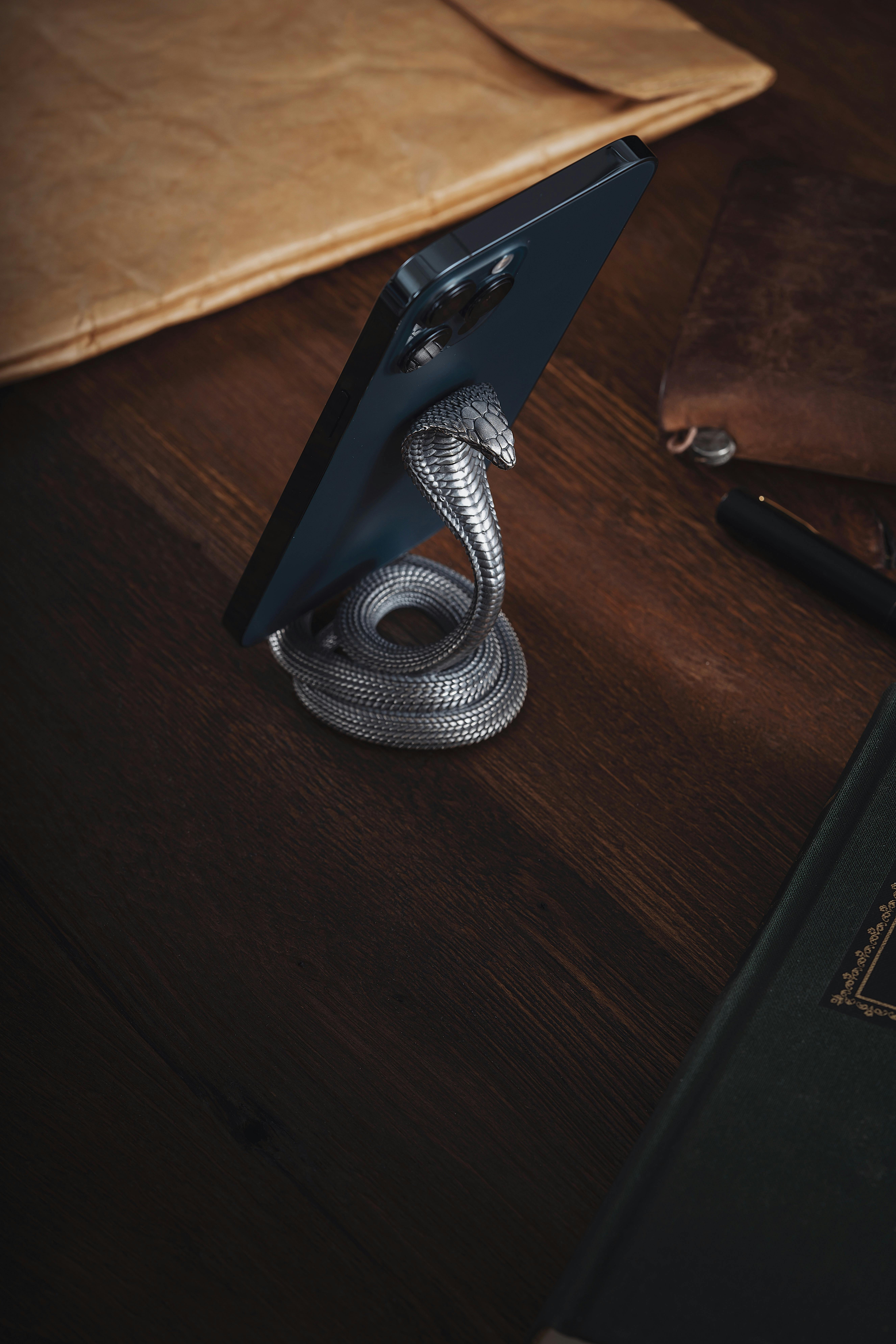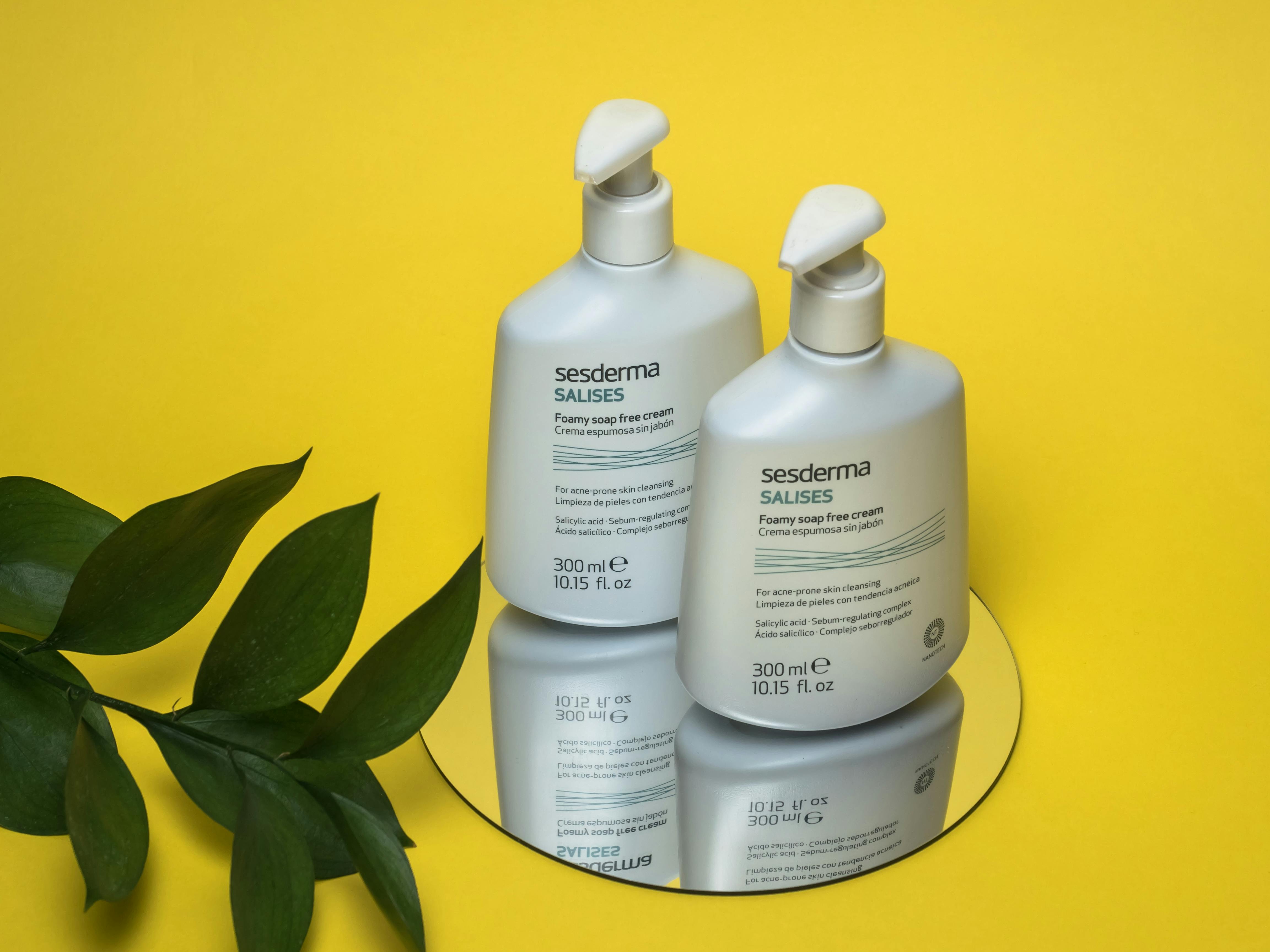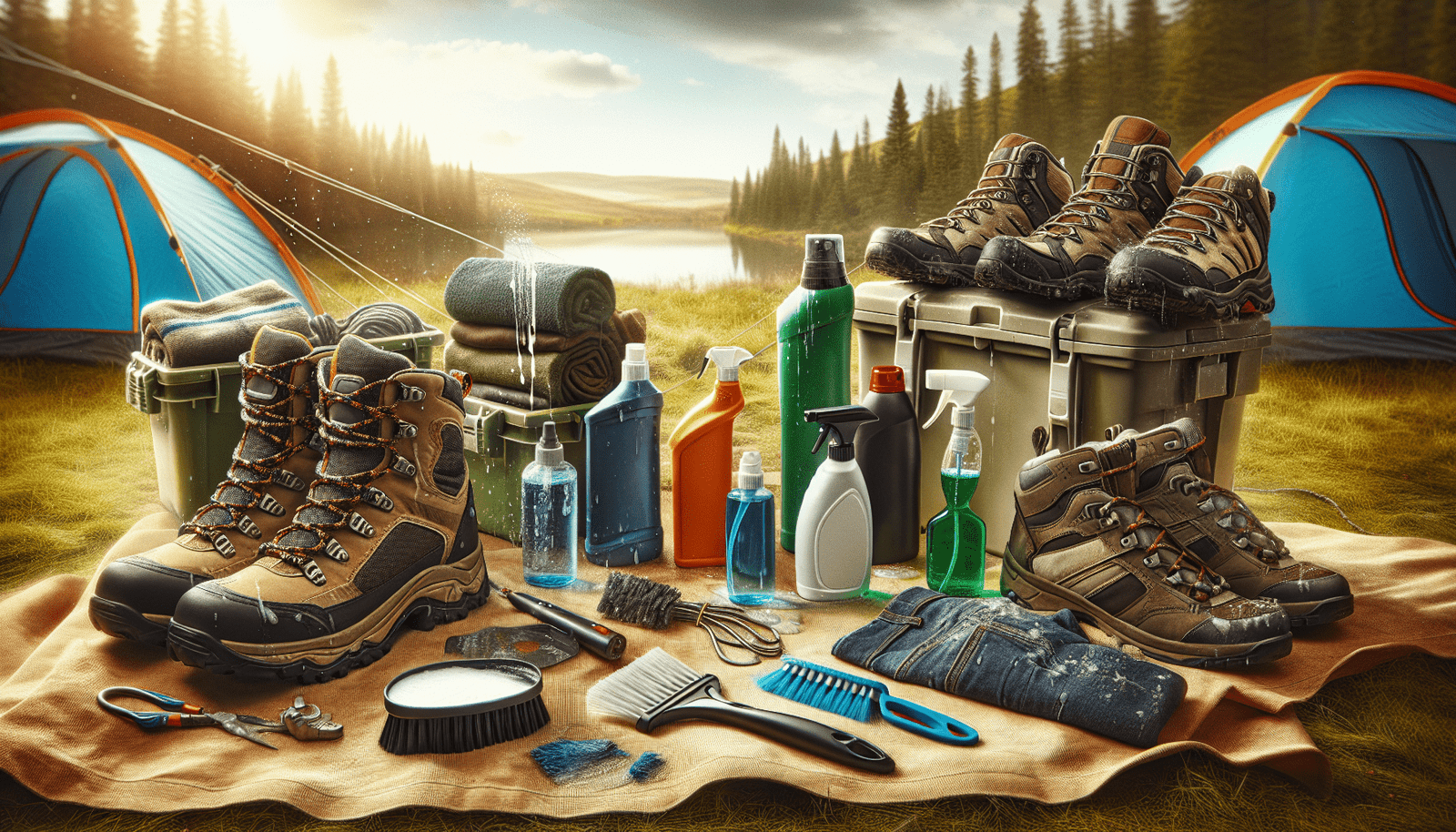So, you love spending time in the great outdoors, whether it’s hiking, camping, or just enjoying the fresh air. But with all those adventures, your outdoor gear can get pretty dirty. Whether it’s your camping tent, hiking boots, or fishing gear, it’s important to keep them clean and well-maintained. But with so many cleaning products available, how do you know which ones are right for your outdoor gear? In this article, we’ll help you navigate through the sea of options and provide you with some handy tips on choosing the right cleaning products to keep your outdoor gear in top shape.
Understanding the Importance of Outdoor Gear Cleaning
Keeping your outdoor gear clean is not just a matter of aesthetics, but it also plays a vital role in enhancing their performance and longevity. Outdoor gear, such as clothing, footwear, backpacks, and camping accessories, are subjected to a lot of wear and tear. Regular cleaning helps in preventing damage and deterioration caused by dirt, stains, and other environmental factors. It also maintains hygiene and minimizes health risks associated with using dirty gear.
Enhances Performance and Longevity
Outdoor gear is designed to withstand various outdoor conditions, but over time, dirt, dust, and other particles can build up and affect their performance. For example, hiking boots with accumulated mud and dirt can lose their traction and grip, making them less effective on slippery terrains. Regular cleaning removes these particles and restores the gear to its optimal condition, ensuring they function as intended for a longer period.

This image is property of images.pexels.com.
Prevents Damage and Deterioration
Outdoor gear, such as clothing and bags, can be exposed to harsh elements like rain, snow, and UV rays, which can cause damage and deterioration. Dirt and stains can weaken the fabric, leading to tears and rips. If left untreated, these damages can become irreparable, resulting in costly replacements. By regularly cleaning your gear, you can prevent the buildup of dirt, stains, and other substances that contribute to the degradation of the materials.
Maintains Hygiene and Minimizes Health Risks
Outdoor activities often involve physical exertion, and sweating is inevitable. When your gear, especially clothing and footwear, are not properly cleaned, bacteria and fungi can thrive in the moist environment, leading to unpleasant odors and potential health risks. Cleaning your gear helps to eliminate these microorganisms, keeping your gear fresh, odor-free, and more hygienic.

This image is property of images.pexels.com.
Identifying the Types of Outdoor Gear
Before diving into the cleaning process, it’s essential to understand the different types of outdoor gear and their specific cleaning requirements.
Clothing and Footwear
Outdoor clothing and footwear are usually made from durable materials like nylon, polyester, or natural fabrics like cotton. Each fabric type requires specific care. For instance, synthetic fabrics often require gentle washing and air drying, while natural fabrics may need special treatments like stain removal or professional cleaning.
Backpacks and Bags
Outdoor gear bags and backpacks are subjected to dirt, dust, and moisture, so regular cleaning is essential. Depending on the material, you may need to hand wash or machine wash them. However, make sure to remove any detachable parts or accessories before cleaning to avoid damage.
Tents and Sleeping Bags
Tents and sleeping bags play a crucial role in outdoor adventures, and their cleanliness is vital for a comfortable camping experience. While some tents and sleeping bags are machine washable, others require spot cleaning or professional laundering. Check the manufacturer’s instructions to ensure you clean them correctly and maintain their performance.
Camping Cookware and Utensils
Cleaning camping cookware and utensils is not only about maintaining their appearance but also ensuring food safety. Most camping cookware can be cleaned with regular dish soap and water. However, some materials may require gentle scrubbing or specific cleaners to remove stubborn stains or grease.
Considering Material Compatibility
Different outdoor gear is made from various materials, and understanding the compatibility of cleaning products with these materials is crucial to avoid damage or discoloration.
Natural Fabrics
Natural fabrics like cotton or wool require gentle washing methods to avoid shrinking or stretching. Use mild detergents and avoid harsh chemicals that may damage or bleach the fabric.
Synthetic Fabrics
Synthetic fabrics like nylon and polyester are durable but can be sensitive to heat. It’s best to wash them in cold water and avoid excessive heat exposure during drying to prevent deformation or melting.
Leather and Suede
Leather and suede need specialized cleaning products and techniques to maintain their texture and appearance. Use leather-specific cleaners and conditioners to keep them supple and avoid cracking.
Nylon and Polyester
Nylon and polyester are commonly used in outdoor gear due to their durability and water resistance. Typically, these materials can be washed with mild detergents and air-dried to prevent damage.
Plastic and Metal
Outdoor gear with plastic or metal components, such as buckles or hooks, may require gentle cleaning with non-abrasive cleaners. Avoid using harsh chemicals that can corrode or damage these materials.

This image is property of images.pexels.com.
Researching Cleaning Methods and Techniques
Once you have identified the types of outdoor gear you own and the materials they are made from, it’s important to familiarize yourself with the appropriate cleaning methods and techniques.
Reading Manufacturer’s Instructions
Manufacturers often provide specific cleaning instructions for their products. Take the time to carefully read and follow these instructions to ensure you clean your gear correctly without voiding any warranties.
Online Resources and Reviews
The internet is a valuable resource for finding cleaning methods and techniques. Look for trusted websites, outdoor gear forums, or reviews from experienced outdoor enthusiasts who have successfully cleaned similar gear. Take note of any tips or recommendations they provide.
Consulting Experts and Professionals
If you’re unsure about the proper cleaning method for your specific gear or if you’re dealing with stubborn stains or delicate materials, consider consulting experts or professionals. Outdoor gear retailers, professional cleaners, or gear manufacturers’ customer service departments can provide guidance and recommendations.
Choosing the Right Cleaning Products
Using the right cleaning products is essential in maintaining the performance and integrity of your outdoor gear. Consider the following options when selecting cleaning products:
Detergents and Soaps
Choosing mild detergents or soaps specifically formulated for outdoor gear can effectively remove dirt and stains without damaging the materials. Avoid using harsh detergents or bleaches that can deteriorate the fabric.
Stain Removers
Stains are inevitable during outdoor activities, but using stain removers that are compatible with your gear’s fabric can effectively remove those tough stains without leaving residue or damaging the material.
Water Repellents and Protectants
Outdoor gear often comes with water resistance or repellency. Over time, this feature may wear off, exposing the gear to moisture. Applying water repellents or protectants after cleaning can restore this feature and prolong the lifespan of your gear.
Deodorizers and Fresheners
To eliminate odors and keep your outdoor gear smelling fresh, consider using deodorizers or fresheners specially designed for outdoor gear. These products help neutralize odors and maintain a pleasant scent, even after intense outdoor activities.

Evaluating Environmental Impact
When choosing cleaning products, it’s important to consider their environmental impact and opt for eco-friendly options.
Biodegradable and Eco-friendly Products
Look for cleaning products labeled as biodegradable or eco-friendly. These products are designed to break down naturally without causing harm to the environment.
Avoiding Harmful Chemicals and Phosphates
Avoid cleaning products that contain harmful chemicals or phosphates, as they can pollute water sources and damage ecosystems. Opt for products that are free of these potentially harmful ingredients.
Considering Ease of Application
The ease of application can greatly impact your cleaning routine and overall satisfaction with the cleaning products you choose. Consider the different forms of cleaning products available:
Sprays and Wipes
Sprays and wipes are convenient for quick clean-ups and spot treatments. They are particularly useful for removing stains or dirt from small areas without requiring a full wash.
Liquids and Concentrates
Liquid cleaning products and concentrates are versatile and can be used for hand washing or machine washing. They often require dilution, allowing you to adjust the cleaning strength as needed.
Powders and Granules
Powder or granule cleaning products are great for deep cleaning and heavy-stain removal. They are highly concentrated and can be mixed with water to create a solution suitable for soaking or machine washing.

Testing the Products on a Small Area
Before applying any cleaning product to your gear, it’s important to perform a patch test to ensure compatibility and minimize the risk of damage.
Performing Patch Tests
Apply a small amount of the cleaning product to a hidden or inconspicuous area of your gear. Gently rub or blot the product and observe any adverse reactions or discoloration. If there are no negative effects, proceed with cleaning the rest of the gear.
Assessing Color Fastness and Material Reaction
Different cleaning products may have varying effects on colors and materials. Pay close attention to any color fading or bleeding during the patch test, and avoid using the product if it causes any undesirable changes in the gear’s appearance.
Adhering to Proper Cleaning Techniques
To ensure the best cleaning results and avoid damaging your outdoor gear, follow proper cleaning techniques.
Pre-Treating Stains and Spots
For stubborn stains or spots, pre-treating them with a stain remover or gentle detergent before washing can help break down the stain and make it easier to remove during the cleaning process.
Hand Washing vs Machine Washing
Some outdoor gear, especially delicate fabrics or items with special features, may require hand washing instead of machine washing. Follow the manufacturer’s instructions or product labels to determine the appropriate washing method for your gear.
Air Drying and Temperature Control
After cleaning your gear, avoid using direct heat sources like dryers or exposing them to excessive heat. Instead, opt for air drying in a well-ventilated area. This will prevent shrinkage, warping, or damaging the materials.
Storing and Maintaining Clean Gear
Once your outdoor gear is clean, it’s important to store and maintain them properly to prolong their lifespan and ensure they stay in good condition.
Proper Storage and Organization
Store your clean gear in a cool, dry place away from direct sunlight. Use appropriate storage solutions like hangers, shelves, or gear-specific bags to keep them organized and protected from dust, moisture, and pests.
Regular Inspection and Maintenance
Regularly inspect your gear for any signs of damage, wear, or deterioration. Address any issues promptly to avoid further damage or risking poor performance during future outdoor adventures. Perform routine maintenance activities like oiling zippers, replacing worn-out parts, or reapplying water repellents as needed.
By understanding the importance of outdoor gear cleaning, identifying the types of gear you have, considering material compatibility, researching cleaning methods, choosing the right cleaning products, evaluating the environmental impact, and adhering to proper cleaning techniques, you can effectively clean and maintain your outdoor gear. With proper care, your gear will not only perform at its best but also last longer, ensuring you’re always prepared for your outdoor adventures.

